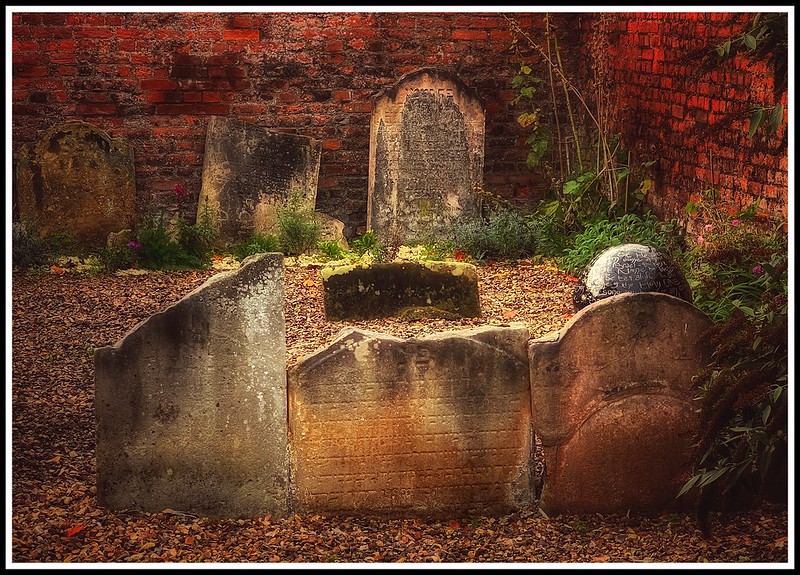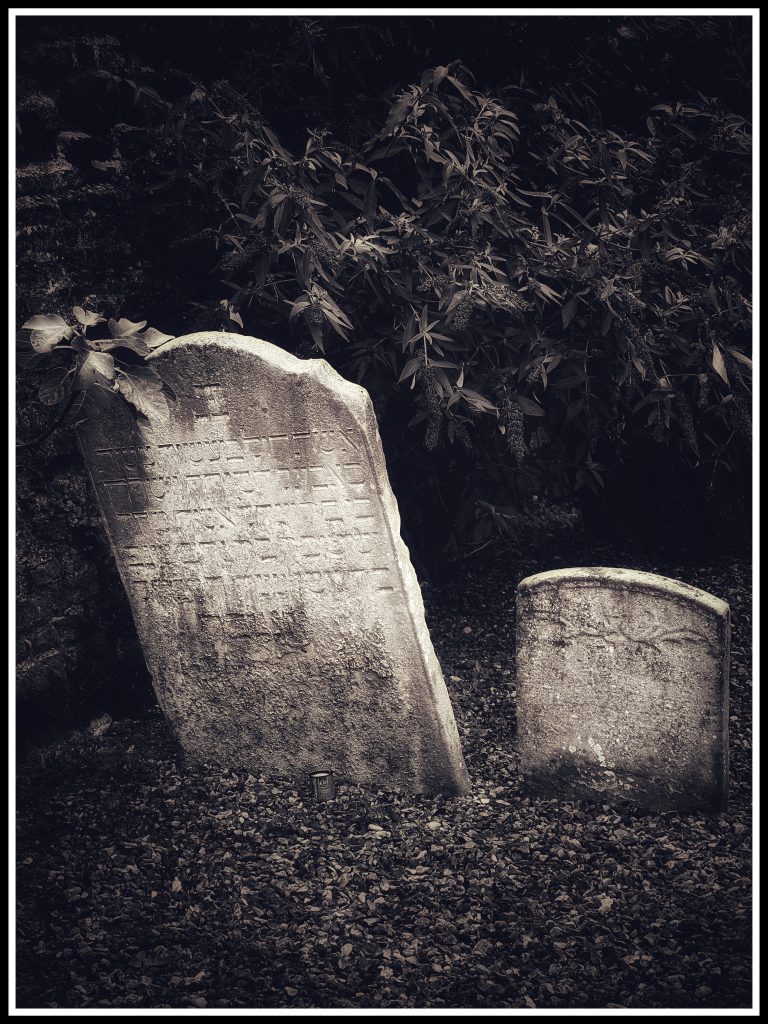Prior to 1066, no Jews were recorded as living in the England. However, William the Conqueror wanted government dues to be paid in coin rather than in kind and so he brought Jews over from Rouen. And as the Church forbade all lending of money with interest, William saw the Jews as a nation of people who could help him.
It Started Well
Following the arrival of the first Jews in England, they were not treated poorly by the English. King Henry I permitted all English Jews to travel freely without the burden of tolls or customs, the right to be tried by their peers in a court of law, and the right to swear on the Torah, among other liberties. Henry also declared a Jew’s oath to be worth that of twelve Christians, which showed the favour with which he treated England’s Jewry.

Photo © James Rye 2022
The success of the community in helping solve the king’s financial problems bought them both favour and reproach. The monarch valued it, but it also made them vulnerable to the wrath of Christians who became indebted to them. And royal favour could be lost abruptly – as happened in 1290 when the community was expelled by Edward I. Incidentally, the royal control over the community has given historians particularly informative records of Jewish financial activity which is often highlighted at the expense of everything else.
It is not known precisely when the first Jews arrived in Bishop’s Lynn (as King’s Lynn was then known). However, one theory is that they probably arrived in Lynn in the late 1150s. In the mid 1140s William d’Aubigny II, Earl of Arundel (who had married Henry I’s widow) opened a mint at Castle Rising. It is highly probable that it would have had a Jewish community associated with it. When the mint was closed by King Henry II in late 1150s the Jewish community probably moved to Lynn.
Whether or not the connection with Castle Rising is accurate, the population of Lynn was certainly expanding after 1150. The new Bishop of Norwich (de Turbe) established a second marketplace and a second Chapel of Ease – St Nicholas’ (St James’ was the first Chapel of Ease). One of the streets leading into the new marketplace, now known as ‘Surrey Street’, appears on early maps as ‘Jews Lane’.
Third Crusade Trouble
In 1189, the security that Jews had enjoyed in Henry II’s reign was threatened. The new king, Richard I, was intent on joining the Third Crusade. As well as slaughtering Jews and Muslims when they reached Palestine, the Crusaders had also historically killed many Jews and Muslims that they came across en route to Palestine. And crusading fervour was in the air, as were the usual false rumours that Jews were killing Christian babies.
In the background, the blood libel myth against the Jews, which had started in Norwich, was beginning to spread. Trouble manifested itself in the anti-Jewish riots which accompanied the coronation of Richard I in London in September, and spread from London during February and March 1190. Richard did not approve of the attacks but seems to have been unwilling or unable to put an effective stop to the violence.
The anti-semitism of 1190 reached Bishop’s Lynn. What allegedly sparked the trouble in Lynn was that a Jew had converted to Christianity and was supposedly attacked by his former faith adherents after he had fled into St Margaret’s Church. A mob of seafarers (perhaps in the port on their way to the Third Crusade) rose up against Lynn’s Jews, burned down their houses, and killed many. Hillen writes: “bold and greedy men carried out the work of their own cupidity with savage joy.”

Photo © James Rye 2022
There were similar attacks throughout the country. The Jews of Lincoln managed to save themselves by taking refuge in the city’s castle, though their property was ransacked. Many Jews were massacred in Colchester, Thetford, Stamford, Ospringe, and Bury St Edmunds. The bloodiest pogrom took place on 16-17 March 1190 in York when approximately 150 people took their own life in Clifford’s Tower rather than face the mob.
The devastation caused to the Jewish community by the 1190 violence is only too apparent four years later. On his way back from the Third Crusade Richard was captured by one of his European enemies, handed over to Emperor Henry VI, and incarcerated in Dürnstein Castle in Lower Austria. An eye-watering sum of money was negotiated for his ransom – 150,000 marks (100,000 pounds of silver) – and the Jews were expected to raise part of that.
A meeting was held in Northampton on March 30 1194 with representatives of English Jewry to decide what amount each Jewish community would pay towards the ransom. At the time London, Lincoln, Canterbury, Gloucester and Northampton were the five most important Jewish communities in England. However, the Jews were only able to raise one-half of the 5,000 marks demanded. This was hardly unreasonable in light of the devastation that the communities had suffered four years earlier. Tellingly, five formerly active communities (Lynn, York, Stamford, Bury St Edmunds and Dunstable) had been wiped out and were not represented at the meeting.
We know that Lynn’s Guild of the Holy and Undivided Trinity was formed in the early years of the C13th, and it may be that part of the reason for this was to fill the absence of money lending facilities following the pogrom. Whatever else the largest guild in the town provided, it’s members could be reasonably sure that they would get a decent burial when dead if they had fallen on hard times, and that they would be likely to be able to raise capital to finance their commercial enterprises.
Exclusion
The C13th saw a steady rise of English anti-semitism as various monarchs tried to raise money for wars and saw the Jews as an easy target. They were required to wear badges, forbidden to build new synagogues, had vast taxes imposed on them, and experienced several pogroms with the intention of cancelling debts to the Jewish community. In 1264, hearing untrue rumours that the Jews were about the hand over the city of London to his enemies, Simon de Montfort had over 500 killed in the city. Finally on 18 July 1290 Edward I ordered their expulsion from the kingdom. All their property was seized by the crown and all outstanding debts payable to Jews were transferred to the King’s name. Any Jews left in England went into hiding or pretended to convert to Christianity.
The Return to King’s Lynn
Oliver Cromwell realised the worth of the Jewish Community to the Country and allowed them back into Britain from 1656. Nearly one hundred years later there is evidence of a Jewish community in King’s Lynn. In the C17th and C18th the town was a much more important port than it is today, and its position on the East Coast almost certainly meant that there would have been some movement of Jews from the Continent into the town before 1747. And easier travel would have enabled London merchants to more easily settle in provincial towns.
The evidence for the settlement in King’s Lynn comes from a document in Yiddish dated 1747. The fragments and the language aren’t always clear. However a silversmith (Salamon Levi) and a goldsmith (Abraham ben Isaiah) are named, and it appears that the goldsmith is of Dutch origin. Services were held in houses, and there are regulation for services, administration, and fines.
In 1750 it was reported that four Jews would sit at the entrance to the Tuesday Market Place selling stationery.
The size of the subsequent community can be gleaned from the entries in the 1851 Anglo Jewish Database. Individuals listed as living in King’s Lynn during the 1770s (1 record), 1780s (3 records), 1790s (4 records), 1800s (3 records), 1810s (7 records); 1820s (22 records), 1830s (21 records), 1840s (21 records), 1850s (12 records), 1860s (3 records) and 1870s (1 record).
In addition to meeting in homes, at the start of the C19th the community met in a synagogue in Tower Street. However, that site was demolished in 1813 when a Methodist Chapel was built. That too has been demolished – Regents Way now runs through the site en route to St James’ Court Car Park. We know that in 1815 when Daniel De Pass married Rachel Davies at the Sun Inn in Norfolk Street, a Dutch Rabbi conducted the ceremony.
Between 1826 – 46 the community met in a synagogue in a yard at the rear of 9 High Street (’a pretty small building’). The minister supplemented his living by acting as an interpreter for sailors who visited the port. There are records of money being given to clothe orphans, to help a poor man with a bad leg, and to assist a pedlar. 7s 6d was paid for the expense of meetings at the Duke’s Head.

Photo © James Rye 2022
There is a Jewish Cemetery on the Mill Fleet. It was acquired in 1830 in the names of Hart-Jones (silversmith), Daniel De Pass (clothier), Judah Hynes (optician), and Isaac Sampson (tobacconist). There are 14 headstones, but some appear to go back to the period before the ground was purchased when presumably the ground was held on lease.
The last entry in the extant congregational records is dated 28 February 1846. The Community must have entered upon its final decay shortly after this date, as it does not figure in the Census returns and Jewish enumerations from 1847 onwards.
In 1945 – 48 there was a small community (approximately 10 families) of evacuees. As far as the writer is aware, at the time of writing, King’s Lynn does not have a synagogue and any practising Jew would have to travel to Norwich, Cambridge, or Peterborough for communal worship.
© James Rye 2022
See also Bishop Turbe and his Lies about the Jews
Book a Walk with a Trained and Qualified King’s Lynn Guide
Sources
- Asbridge, T. (2018) Richard I, Penguin
- Blackburn, M. (1994) Coinage and Currency, in King, E. (ed.) The Anarchy of King Stephen’s Reign, Clarendon Press
- Hillen, H.J. (1907) History of the Borough of King’s Lynn, Vol.1, EP Publishing Ltd
- Jones, D. (2012) The Plantagenets: The Kings Who Made England, Collins
- Richards, P. (1990) King’s Lynn, Philimore
Websites:
- https://www.jewishgen.org/jcr-uk/Community/kingslynn/index.htm
- http://users.trytel.com/~tristan/towns/lynnmap1.html
- https://www.english-heritage.org.uk/visit/places/cliffords-tower-york/history-and-stories/massacre-of-the-jews/
- https://www.genuki.org.uk/big/eng/NFK/kings_lynn/Synagogue
- https://www.genuki.org.uk/big/eng/NFK/kings_lynn/SynagogueHighSt

[…] The Jews of King’s Lynn […]
[…] it was closed down by Henry II, William II had established a local mint at Castle Rising (see The Jews of Lynn). Such a valuable resource would need […]
[…] Jews Lane – A place where the Jews settled before the pogrom of 1190. See The Jews of King’s Lynn. […]